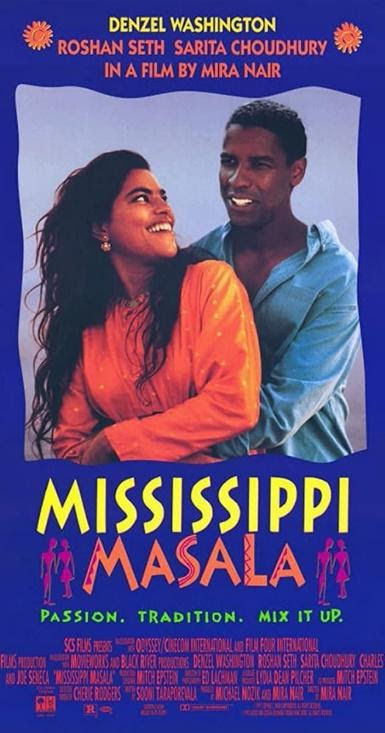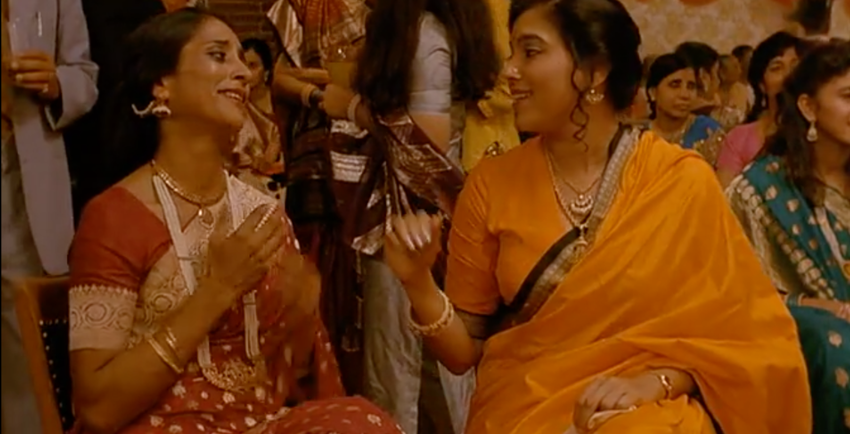Colourism & Colonialism in the South Asian Community by Michaela
- Roann Gutierrez
- Jul 24, 2020
- 4 min read
A few days ago, I was watching a movie called Mississippi Masala. It’s a film I’ve been wanting to watch for a while because it stands as one of the most innovative films about the South Asian diaspora to this day.

Initially released in 1990, Mira Nair’s diaspora film is so multi-faceted. It is one of the first cinematic depictions of Idi Amin’s expulsion of Asians from Uganda in 1971. However, it also discusses topics in the community that are not widely spoken about in productive ways such as, the struggles of first-generation immigrants, prejudices against inter-racial relationships and most importantly to this post – colourism.
In one of the early scenes of the film, lead character Mina (played by Sarita Choudhury) notably jokes with her mother about her darker skin tone. The trope of darker skin having negative connotations is continued later with the gossiping Asian aunties. They shame Mina for her complexion, insisting she could not be with Harry Patel (the most eligible Indian bachelor in the community) because “Harry’s mum doesn’t like darkies”. The aunties make it their mission to continue judging Mina’s working-class family, even stating, “you can’t be dark and poor and expect to marry someone like Harry Patel!”. Mira Nair does something very notable here to the frankly irritating auntie characters. She uses their throwaway critical comments to touch on how detrimental colourism is to peoples lives.

There is an important intersection between class and colourism that has been woven into the fabric of Indian society, as well as the diaspora, through their colonial past.
British colonialism in India, which expanded in the late 1850s to 1947, built upon the discrimination of darker-skinned people through India’s caste system. The British Raj established a significant hierarchal system of power based on skin colour. The racist pseudo-scientific theory of social Darwinism rose in popularity at the time and was used by the British to justify their horrific treatment of Indian people. The theory denoted skin colour as one of the key factors of intelligence, which the British manipulated to employ white British individuals in administrative posts whilst darker-skinned Indian people were given lower-skilled menial roles. This colourist bias also factored into lighter-skinned Indians being seen as ‘allies’ to the British and consequently being hired more frequently, and in better roles.

For many of us, we can relate to the judgemental and annoying aunties shown in Mississippi Masala. The ones that tell us we’ve grown fatter, darker or need to think about marriage sometime soon *yawn*. Yet through their association of Mina’s social standing and her skin tone with unworthiness, they show the association of whiteness with beauty, success and prosperity.
Whilst the explicitly prejudiced mentality of the British framing darker people as less intelligent or worthy of higher paid work has passed, the subconscious biases of darker skin being less desirable continue to impact the practices of different industries in our society.
Creative industries are known to have prejudiced hiring practices or marginalise darker-skinned women to certain roles (note I have intentionally said prejudiced and NOT preferential for a reason here). The Bollywood film industry is especially guilty of this, even casting white women for roles specific to Asian actresses. Arguments about these industries having preferences or ‘appealing to the masses’ ultimately fall short because systemically these so-called preferences are rooted in colourist ideals. It puts darker-skinned people in an unfair position of gaining less work in these industries and more criticism or backlash when they are featured.

Essentially, these industries continue to uphold Eurocentric beauty standards by keeping fairness as a measure of attractiveness. Whilst the explicitly prejudiced mentality of the British framing darker people as less intelligent or worthy of higher paid work has passed, the subconscious biases of darker skin being less desirable continue to impact the practices of different industries in our society.
When I was younger, growing up as an Indian girl in the UK I genuinely thought I could only be seen as pretty by other people if I was white or if I was lighter. Little did I know that these internal biases were normalised by the colourism that is not only prevalent in the south Asian community but also perpetuated in society. I was noticeably darker than my South Asian peers and not having enough representation of darker-skinned Asian or Black women in the media made me doubt myself a lot. It also put some deeply rooted insecurities in me that took me a long time to process and deal with. Unfortunately, I think this is a common feeling for a lot of South Asian girls who want to see themselves in the film, TV or magazines they consume but are often met with colourism from both the media and their families.

Art by @artby_gt on Instagram
Tackling colourism in families, communities and even dating ‘preferences’ comes from actively destabilising the prejudices normalised by degrading darker-skinned people. It’s about acknowledging how white supremacy can affect your own thought processes, challenging your own subconscious biases, telling people when their insulting jokes aren’t funny and supporting industries or content that advocates for more diversity – not just ones that include darker-skinned women when diversity is profitable.
In a society where lighter skin is championed, we need to let each other and younger generations know that darker skin is just as brilliant and just as beautiful.

Today's feature writer is Michaela! She reached out to me on Twitter with an interest of featuring after running her own blog, linked below. As you read, her voice is intellectual and powerful. She educates and paints a vivid picture with just the words she writes. I encourage you all to give her blog a follow and read for more of her content. She has been lovely to work with and I look forward to seeing her and her blog's success in the future!
Her blog: https://michaxlawrites.wordpress.com/
Follow her:
Twitter: @_michaxla
Instagram: @michaxlaa
Cover art by namalondon. She paints these prints on both canvas and clothes - here's the link to some of her products https://www.redbubble.com/people/namalondon/shop
Join Michaela @platform_blog on Instagram to interact with her and ask questions about her post!
Have a story to share? DM me on Instagram @platform_blog or comment down below to get in touch.









Comments